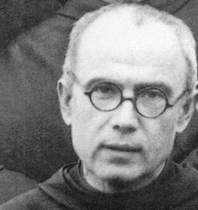First study of Catholic inmates at Auschwitz

St Maximilian Kolbe
Source: CNS/BBC/ICN
The first study of the religious practices of Catholic and other Christian prisoners at Auschwitz-Birkenau was published last week.
The author, Teresa Wontor-Cichy, who is a historian at the the Auschwitz-Birkenau State Museum, said: "Although most deportees to Auschwitz from occupied Europe were Jews, the camp was originally opened for Polish prisoners and also took in Catholic resistance fighters from France, Germany, Belgium and other countries.
"This aspect of its history has been studied only randomly up to now. But it's important the world knows more and takes it into account," she said, after the camp museum's research centre published her paper titled Religious Life of Christian Prisoners in KL Auschwitz.
While 90 per cent of the 1.2 million prisoners killed by the Nazis in Auschwitz-Birkenau during World War II were Jewish, around 100,000 Poles as well as Roma, and prisoners of other nationalities were also murdered.
In an interview with the Catholic News Service, Wontor-Cichy said that the story of some Catholics at Auschwitz, including St Maximilian Kolbe, and St Edith Stein, has been extensively documented, but that thousands of lay Catholics had also kept their faith at the camp.
"Up to now, their religious devotions have been known about only through occasional memoirs and articles - it's now possible to document them more completely," she stated.
According to Wontor-Cichy, many such lay Catholics at Auschwitz had displayed "great determination" in hiding devotional objects at the camp, including rosaries composed of bits of dry bread.
Although the dispensing of sacraments was "strictly forbidden" on pain of death by the Nazi commanders of Auschwitz-Birkenau, priests would administer them in in secret, thus supplying the inmates with "a form of spiritual and psychological support" and a "sense of community."
In 1944, the Nazi administrators of Auschwitz-Birkenau had tried to deter inmates from celebrating Christmas by setting up a decorated Christmas tree surrounded by corpses in the camp's assembly yard. However, one priest, Father Wladyslaw Grohs, had celebrated Mass and heard confessions in his cells.
Several priest-survivors of the camp, including Cardinal Adam Kozlowiecki, the future Archbishop of Lusaka, Zambia, later wrote in detail about their pastoral work in Auschwitz-Birkenau.
Wontor-Cichy emphasised that it was "impossible to state" how many Christians had been in the camp because "95 per cent of the camp's archives were destroyed."
However, she noted that "religious affiliations were recorded when prisoners were registered and died, and we know Catholics made up the largest number - mostly from Poland, but also from France, Germany, the Netherlands, Slovakia and the Soviet Union."
"Catholics were deported here throughout the war for political crimes, as well as when other prisons were overloaded," Wontor-Cichy said.
She added: "People visiting the camp often have requested their stories are studied in a rigorous way to establish the full truth of what happened here."
The historian observed that while many inmates had "doubted God's providence" other former non-believers had turned to prayer in the camp "instinctively seeking contact" with Catholic priests and nuns who were fellow prisoners. Often the Nazis would assign them the heaviest workloads.
.


















